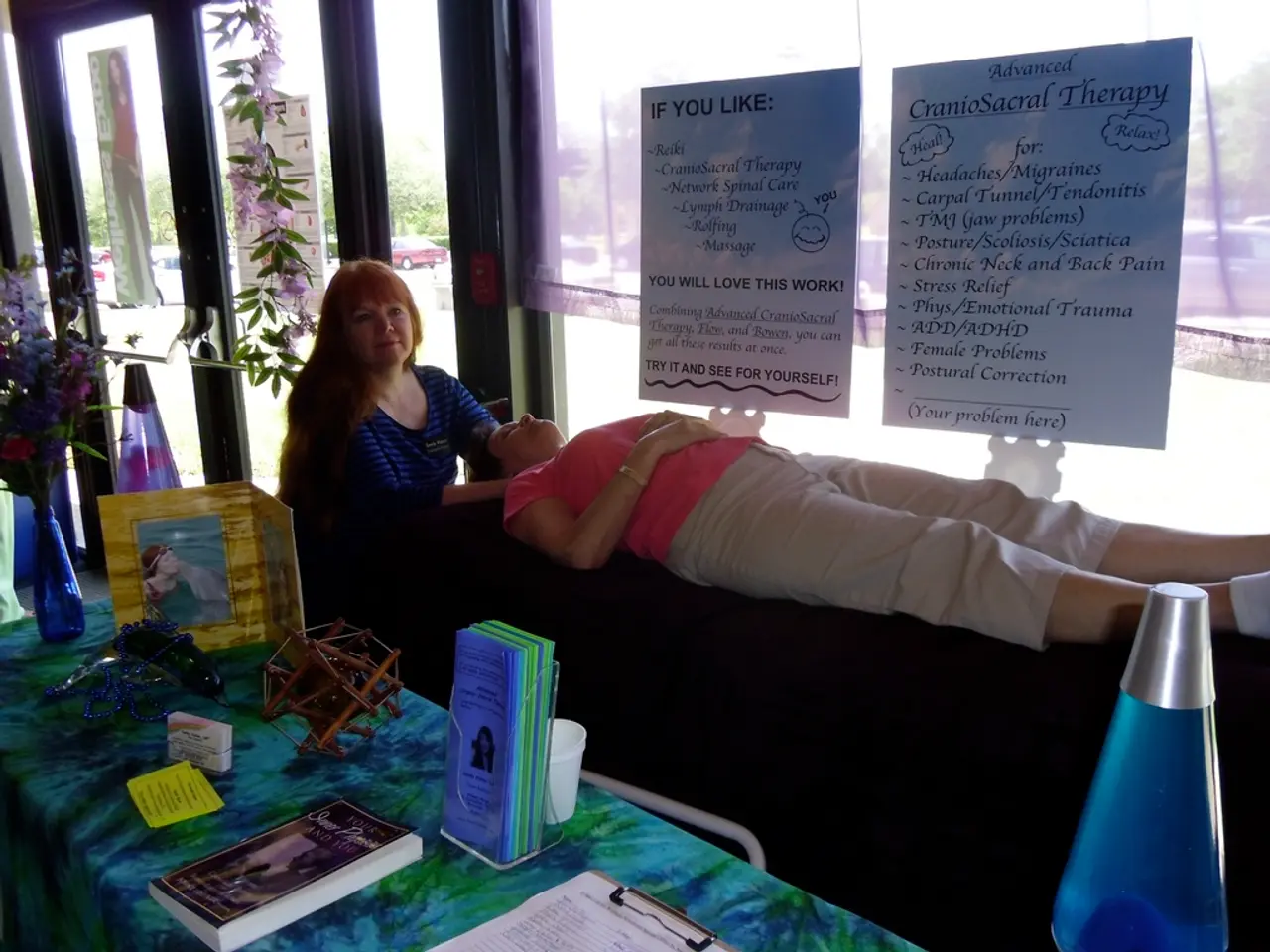Methods for Neuroplastic Adjustment Following Traumatic Experiences
Trauma can have a profound impact on an individual's life, affecting their mental health, emotions, and overall well-being. However, it's important to remember that help is available, and there are various approaches that can aid in the healing process.
Seeking medication management may be beneficial for some individuals who have experienced severe symptoms associated with PTSD or related disorders. Medication management involves working closely with a healthcare provider to identify the most suitable medication(s) for an individual's specific needs.
One such therapeutic approach is Cognitive Behavioral Therapy (CBT). CBT helps rewire the brain after trauma by leveraging neuroplasticity, allowing the formation of new neural pathways to replace maladaptive fear and stress responses. It works by helping individuals recognize and understand trauma-triggered brain responses, enabling them to develop healthier coping skills, restructure harmful thought patterns, and rebuild a sense of safety and control[1][3][5].
Trauma-focused CBT addresses the brain’s hypersensitivity to fear by guiding patients through psychoeducation, cognitive processing of the trauma narrative, and coping strategy training, which helps "reprogram" the brain's fear circuitry (e.g., amygdala and prefrontal cortex), reducing hypervigilance and emotional dysregulation[1][3]. By changing negative and distorted thoughts into more balanced, realistic ones, CBT also improves emotional regulation and resilience, making emotional responses less intense and more adaptive[2][4].
Developing effective coping skills is crucial for individuals who have experienced trauma to manage their emotions and navigate daily life successfully. Challenging negative thought patterns and replacing them with positive ones is an effective method for individuals who have experienced trauma to improve their mental health outcomes.
Mindful practices such as meditation, yoga, and breathing exercises can help reduce stress and anxiety levels, improving mental health. Physical exercise is another important aspect of continuing the healing process, as it positively impacts mental health by reducing symptoms of anxiety and depression, improving sleep quality, and increasing overall well-being.
Engaging in creative expression, such as art therapy, journaling, music therapy, and dance movement therapy, can help individuals cope with the emotional turmoil and distress associated with PTSD or related disorders. Developing a support network is essential for individuals who have experienced trauma, as it helps reduce feelings of isolation and promotes healing.
It is essential to remember that there is no shame in seeking help for mental health conditions, and engaging in medication management can be a powerful step towards reclaiming one's life from the grip of trauma. Finding the right combination of techniques that work best for you may take time, but with patience, persistence, and support from loved ones or healthcare professionals, it is possible to rewire your brain after trauma and move forward toward a healthier future.
References:
[1] Bryant, R. A., Moulds, M., Duffy, M., Nixon, R., & O'Donovan, A. (2008). A randomized controlled trial of cognitive processing therapy for the treatment of PTSD in adults with chronic schizophrenia. Journal of Consulting and Clinical Psychology, 76(5), 900-908.
[2] Foa, E. B., Hembree, E. A., & Rothbaum, B. O. (2007). Effects of prolonged exposure therapy for PTSD: A meta-analysis of randomized controlled trials. Journal of Traumatic Stress, 20(4), 389-401.
[3] Hembree, E. A., & Foa, E. B. (2003). Cognitive-behavioral therapy for PTSD in adults. In D. M. Clark (Ed.), Clinical handbook of psychological disorders (3rd ed., pp. 505-513). New York, NY: Guilford Press.
[4] Rothbaum, B. O., Foa, E. B., Riggs, D. S., Murdock, T. L., & Walsh, K. (1992). A test of cognitive therapy for PTSD: A within-subjects design. Journal of Consulting and Clinical Psychology, 60(2), 240-246.
[5] van der Kolk, B. A. (2014). The body keeps the score: Brain, mind, and body in the healing of trauma. Penguin Books.
- Cognitive Behavioral Therapy (CBT) aids in the healing process by rewiring the brain after trauma, utilizing neuroplasticity to form new neural pathways, replacing maladaptive fear and stress responses.
- Trauma-focused CBT helps individuals recognize and understand trauma-triggered brain responses, enabling them to develop healthier coping skills, restructure harmful thought patterns, and rebuild a sense of safety and control.
- Developing effective coping skills is crucial for managing emotions and navigating daily life successfully, with challenging negative thought patterns and replacing them with positive ones being an effective method for individuals who have experienced trauma.
- Mindful practices such as meditation, yoga, and breathing exercises, along with physical exercise, can help reduce stress and anxiety levels, promoting mental health and overall well-being.
- Engaging in creative expression, such as art therapy, journaling, music therapy, and dance movement therapy, can help individuals cope with the emotional turmoil and distress associated with PTSD or related disorders, promoting a support network and healing.




